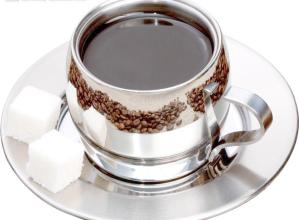The two main types of coffee trees
Arabica bean coffee trees can be divided into two main varieties: Arabica (Coffea Arabica) and Robusta (Coffea Robusta/Coffea Canephora). In addition, there are some minor species, such as Coffea Liberica and Coffea Arabusta, but they are rare on the market.
Robusta beans Robusta coffee trees can grow on flat land, it has a strong resistance to disease, and the yield is higher. Compared with Arabica beans, Robusta beans are more round in appearance, with a slightly inflated side with cracks in the middle, and straight grooves reminiscent of soybeans, while Arabica beans are oval and zigzag, a bit like half a peanut.
Generally speaking, Robusta beans are poor in taste, have 2 to 3 times the caffeine content of Arabica beans, and are cheap, mostly for the large coffee industry to produce instant coffee or low-cost comprehensive products. Arabica coffee trees are suitable for growing on fertile hillsides with good drainage at an altitude of about 1,000 to 2,000 meters. The climate should not be too humid, but they still need a continuous rainy season and abundant rainfall.
During the day, they like mild temperatures and less than two hours of direct sunshine, so if there is a lack of afternoon showers or fog to report every day, local farmers have to plant many taller trees in the coffee garden for shade. At night, they want an environment of about ten degrees Celsius but not too low, because too warm will make the coffee berries grow too fast to produce small, strong, hard and high-quality coffee beans; in case it is too cold to frost, the coffee trees will freeze to death.
Based on these characteristics, the promised land suitable for Arabica coffee is mostly located in countries with alpine terrain between the Tropic of Cancer and the Tropic of Cancer, which is also known as the coffee belt (Coffee Zone/Coffee belt).

Important Notice :
前街咖啡 FrontStreet Coffee has moved to new addredd:
FrontStreet Coffee Address: 315,Donghua East Road,GuangZhou
Tel:020 38364473
- Prev

Coffee trees blossom and bear fruit time medical coffee beans are planted
The first flowering period of the coffee tree is about three years. The five-petal tube-shaped white flowers are filled with a faint scent of jasmine, and the inflorescences are arranged in dense clusters. It will wither after two or three days of flowering and begin to bear fruit after a few months. The fruit is a drupe with a diameter of about 1.5 cm, which is green at first, then turns yellow gradually, and turns red when ripe, so it is very similar to cherries.
- Next

The planting conditions of coffee trees the taste of American coffee
However, not all the land located in this area can produce good coffee trees. The ideal planting conditions of coffee trees are as follows: the temperature is between 15 ℃ and 25 ℃, and the annual rainfall must reach 1500 mm to 2000 mm. At the same time, the rainfall time should be in line with the flowering cycle of coffee trees. Of course, in addition to the coordination of seasons and rainfall, there should be fat work.
Related
- Does Rose Summer choose Blue, Green or Red? Detailed explanation of Rose Summer Coffee plots and Classification in Panamanian Jade Manor
- What is the difference between the origin, producing area, processing plant, cooperative and manor of coffee beans?
- How fine does the espresso powder fit? how to grind the espresso?
- Sca coffee roasting degree color card coffee roasting degree 8 roasting color values what do you mean?
- The practice of lattes: how to make lattes at home
- Introduction to Indonesian Fine Coffee beans-- Java Coffee producing area of Indonesian Arabica Coffee
- How much will the flavor of light and medium roasted rose summer be expressed? What baking level is rose summer suitable for?
- Introduction to the characteristics of washing, sun-drying or wet-planing coffee commonly used in Mantenin, Indonesia
- Price characteristics of Arabica Coffee Bean Starbucks introduction to Manning Coffee Bean Taste producing area Variety Manor
- What is the authentic Yega flavor? What are the flavor characteristics of the really excellent Yejasuffi coffee beans?

